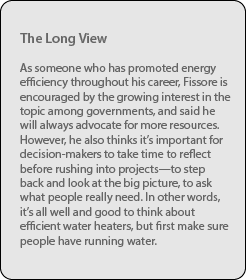
“Energy efficiency is a very powerful issue,” said Adelqui Fissore, an engineer at the Universidad de Concepción in Chile, who has worked in the field for more than 30 years. “It changes people’s lives, it changes their faces.”
 In 2011 and 2012, Fissore did an independent evaluation of a Chilean government program called the Programa de Reacondicionamiento Térmico, which provides subsidies to retrofit low-income homes with insulation, and in some cases better windows, to protect against the cold.
In 2011 and 2012, Fissore did an independent evaluation of a Chilean government program called the Programa de Reacondicionamiento Térmico, which provides subsidies to retrofit low-income homes with insulation, and in some cases better windows, to protect against the cold.
Fissore’s team reviewed the program paperwork for a large sample of participants—nearly 1,500—then conducted field visits to 75 dwellings to do a more detailed evaluation that included surveys before and after the improvements, as well as measurements of temperature, humidity, carbon dioxide levels, and other aspects.
Assessing energy efficiency can be a complex undertaking—especially in areas where the primary source of fuel is firewood, which can vary considerably in quality. Another factor is that people don’t necessarily keep the house at a steady temperature.
“People buy firewood until the money runs out,” Fissore explained. “The rest of the month they go without heat.”
Fissore’s team developed a model for the study that took into account a range of factors, including human behavior. The study covered homes across a long swath of Chile, from the central part of the country, near Santiago, to Coihaique in the south, where people need to heat their homes practically all year.
The study made a range of recommendations based on its findings. For example, it noted that the biggest savings corresponded to older houses that were not insulated at all or had very little insulation before the retrofit. It recommended giving priority to these types of dwellings—as long as they were in good enough shape to warrant the investment.
On average, the study found, those who participated in the insulation program had warmer homes (by 1 degree Celsius) and fewer health problems, and consumed 28 percent less energy than before the home improvements. And, Fisorre remembers, “People looked happier.”
 View Map
View Map